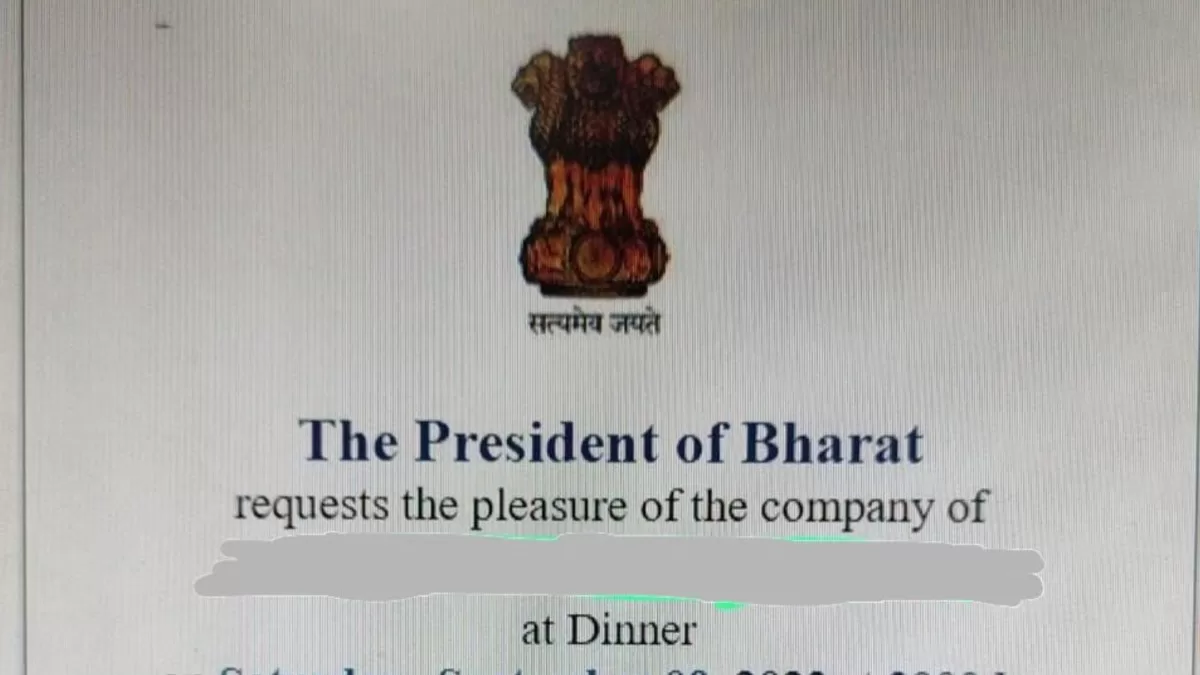Droupadi Murmu is referred to as “President of Bharat” instead of “President of India” in the invitation sent to G20 attendees on Tuesday.
India is hosting the annual G20 summit in New Delhi on Saturday and Sunday. Many world leaders, including US President Joe Biden and French President Emmanuel Macron, will attend.
The nation of more than 1.4 billion people is officially known by two names, India and Bharat, but the former is most commonly used, both domestically and internationally. Hindustan is another word for the nation and is often used in literature and other forms of popular culture.
Bharat is an ancient Sanskrit word that many historians believe dates back to early Hindu texts. The word is also used as a Hindi option for India.
Officials of Modi’s right-wing Bharatiya Janata Party (BJP) back the change in nomenclature. They argue that the name India was introduced by British colonials and is a “symbol of slavery”. The British ruled India for about 200 years until the country gained independence in 1947.
“It is a proud moment for every Indian to have ‘The President of Bharat’ written on the invitation card for the dinner to be held at Rashtrapati Bhavan during the G20 Summit,” tweets Uttarakhand CM Pushkar Singh Dhami pic.twitter.com/kXVVYbPQ7B
— ANI (@ANI) September 5, 2023
The BJP has long tried to erase names related to India’s Mughal and colonial past. The government has been accused of pursuing a nationalist agenda aimed at forming an ethnic Hindu state out of a constitutionally secular India.
In 2015, New Delhi’s famous Aurangzeb Road, named after a Mughal king, was changed to Dr APJ Abdul Kalam Road after protests from Modi’s party leaders.
Last year, the government also renamed a colonial-era avenue in the heart of New Delhi that is used for ceremonial military parades.
Modi’s government says the name changes are an effort to reclaim India’s Hindu past.
“Another blow to slavery mentality,” the top elected official of Uttarakhand state, Pushkar Singh Dhami, said on X. Dhami, a BJP leader, shared the G20 dinner invitation in his post.
BJP lauds ‘President of Bharat’ reference in a G20 Summit dinner invitation, says it underscores country’s civilisational march
— Press Trust of India (@PTI_News) September 5, 2023
India’s opposition parties, however, criticised the government’s move.
“Rashtrapati Bhawan [President’s House] has sent out an invite for a G20 dinner on Sept 9th in the name of ‘President of Bharat’ instead of the usual ‘President of India’,” Jairam Ramesh, leader of the main opposition party, the Indian National Congress, wrote on Tuesday on X, formerly known as Twitter.
“Now, Article 1 in the Constitution can read: ‘Bharat, that was India, shall be a Union of States.’ But now even this ‘Union of States’ is under assault,” he added.
Congress legislator Shashi Tharoor said Indians should “continue to use both words rather than relinquish our claim to a name redolent of history, a name that is recognised around the world”.
“While there is no constitutional objection to calling India ‘Bharat’, which is one of the country’s two official names, I hope the government will not be so foolish as to completely dispense with ‘India’, which has incalculable brand value built up over centuries,” he posted on X.
BJP President Jagat Prakash Nadda slammed the Congress party.
“Why does the Congress have so much objection to every subject related to the honour and pride of the country?” he posted on X. “It is clear that Congress neither respects the country, nor the Constitution, nor the constitutional institutions.”
Disputes over “India” vs “Bharat” have gained ground since opposition parties in July announced a new alliance – called the Indian National Developmental Inclusive Alliance, or INDIA – to unseat Modi and defeat his party in of national elections in 2024.
Since then, some officials in Modi’s party have demanded that the country be called Bharat instead of India.
Many Indian media outlets, citing sources, on Tuesday reported that the government might bring a resolution to that effect during a special parliament session this month.
However, the government has not revealed the agenda for the session to be held September 18-22.
